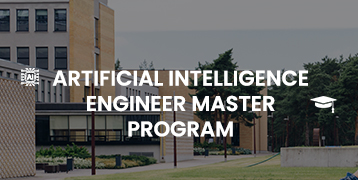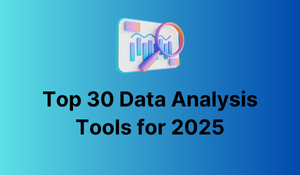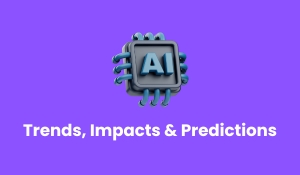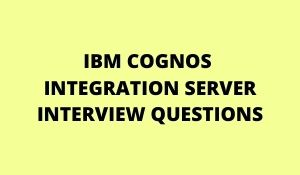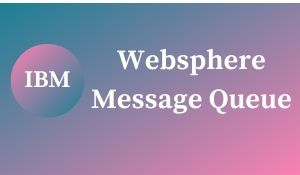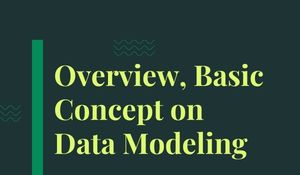
Defining Data Modeling
A Data Model is a visual representation of a data specification. Data models are generally designed in the form of a UML diagram. Data can be stored and collected in various ways where it does not matter if it is an SQL or NoSQL database. The process of creating what data requires to be collected and storage of data in a database is termed data modeling. It is a conceptual presentation of data objects and associations among various data objects. Data modeling is the development of formulating data in an information system in a structured format. It helps in analyzing data easily which will additionally assist you in meeting business requirements. This process of data modeling requires data modelers who will work with stakeholders and prospective users of an information system. The Data modeling mechanism is achieved with the creation of a data model that props up the business information system infrastructure. This process also involves understanding the structure of an organization, where it bridges the gaps between technical and functional areas and in addition, proposing a solution that enables the organization to achieve its objectives.
Why is data modeling done?
Data modeling is a core data management regiment. By imparting a visual representation of data units and their business context, it helps in precise statistics needs for unique business processes. It then defines the characteristics of the information factors that will be included in applications and in the database or file system structures used to store, manage, and process the data.

Why use a data model?
Primary reasons for using a data model are given below:
- Visual representation of data assists you in improving data analysis. Creating a physical database provides a holistic view of the data which can be used by developers.
- All important data of an enterprise are precisely presented in the model. The data model reduces the chances of data omission. Data omission can lead to faulty reports and incorrect results.
- A better understanding of business requirements is portrayed by this data model.
- It improves data quality.
- It assists in identifying redundant, duplicate, and missing data. as well as supports the creation of a robust design that brings the whole data of an organization on the same platform.
- A qualified data model helps in providing better consistency across all projects of an organization.
- It assists Project Managers with better scope and quality management. It also enhances performance to the core.
- It characterizes relational tables, stored procedures, and primary and foreign keys.
| Learn more information from the GoLogica “Data Modeling Training“ |
What are the different types of data models?
Data modelers use three kinds of models to separately characterize business ideas, workflows, applicable data entities, relationships, attributes, and technical structures for managing the data. The models generally are created in a progression as businesses plan new applications and databases. The different types of data models include the following:
Conceptual data model
This is a high-level visualization of the business enterprises or an analytics technique that a system will support. It maps out the types of data that are required, and how unique enterprise entities interrelate and related business rules. Conceptual models are not tied to precise databases or application technologies. Business executives are the foremost audience for conceptual data models, to assist them in seeing how a device will work and make sure that it meets business needs.
Logical data model:
When a conceptual data model is finished, it can be used to create a smaller logical one. Logical data models show how data entities are related and describe the data from a technical outlook. For instance, they define data structures and come up with details on attributes, keys, data types, and other characteristics. They aren’t connected to a particular technology platform, equally like conceptual models. To help understand required application and database designs, the technical side of an organization uses logical models.
Physical data model:
A logical model is in the service as the basis for the occurrence of a physical data model. Physical models are particular to the database management system (DBMS) or application software that will be implemented. They outline the structures that the database or a file system will use to store and control the data. That consists of fields, indexes, constraints, tables, columns, triggers, and other DBMS elements. Database designers use physical data models to generate schema for databases and create designs.
Related Courses
| Course Name | Enroll Now |
|---|---|
| NoSQL Training | Enroll Now |
| Transformational Leadership Training | Enroll Now |
| MongoDB Admin Training | Enroll Now |
| Microsoft Power BI Training | Online Training | Enroll Now |
Advantages and Disadvantages of Data Models
Advantages
- Data modeling permits you to query data from the database and derive various reports based on the data. The help of reports indirectly contributes to data analysis. These reports can be used to enhance the quality and productivity of the project.
- Data objects presume that the functional team is presented precisely with data modeling.
- In a variety of formats, businesses have plenty of data. Data modeling provides a structured system for such an unstructured form of data.
- Data modeling improves business intelligence by making data modelers work closely with the ground realities of the project which consists of gathering data from multiple unstructured sources, spending patterns, reporting requirements, etc.
- It upgrades communication across the organization.
- It assists in documenting data mapping throughout the ETL process.
Disadvantages
- The development of a data model is a very tedious job. One should be aware of the physical characteristics of the data storage.
- This system consists of complex application development and knowledge of biographical truth.
- The model is not quite user-friendly. Small changes induced in the system require major modification in the entire application.

Conclusion:
In a nutshell, the data modeling conception is the first and most important segment of database design, due to the fact it defines data entities, the relations amidst the data objects, etc. A data model holistically talks about the enterprise rules, government policies, and regulatory compliance with the data. This is what Data Modeling maintains on the table for us. Gologica Data Modeling Course is a good place to start upskilling in this consideration. As a data modeling professional, my present career prospects are looking towards exponential growth. I hope this article will assist you to begin your career. Happy Learning at Gologica!!
Related Articles:
🎯 Data Modeling Tutorials
🎯 7 Data Modeling Techniques and Concepts for Business
🎯 Business Leaders Need to Know About Data Modeling
🎯 Importance of Data modeling and using different Technologies in Data Modeling
🎯 What is the best data modeling Tool to use in 2024?
🎯 Data Modeling Interview questions and answers – 2024



